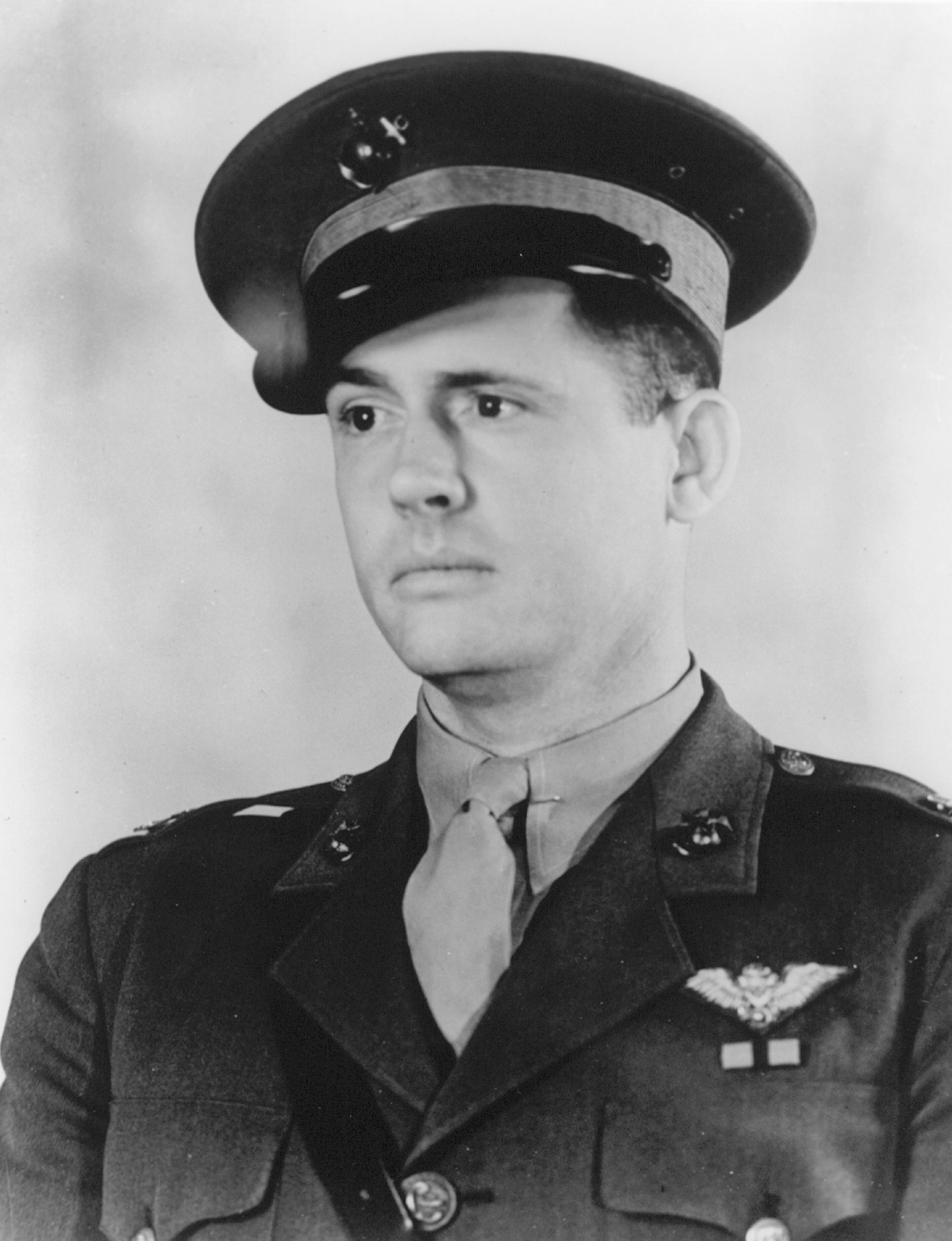
11 December 1941: The last four aircraft of Marine Fighter Squadron 211 (VMF 211), led by Captain Henry Talmage Elrod, U.S. Marine Corps, attacked the invading Imperial Japanese Navy South Seas Force, consisting of four light cruisers, six destroyers, two patrol boats and two amphibious support ships with 450 Special Navy Landing Force soldiers, as they approached to invade the United States outpost at Wake Island. The Grumman F4F-3 Wildcats bombed the destroyer IJN Kisaragi.
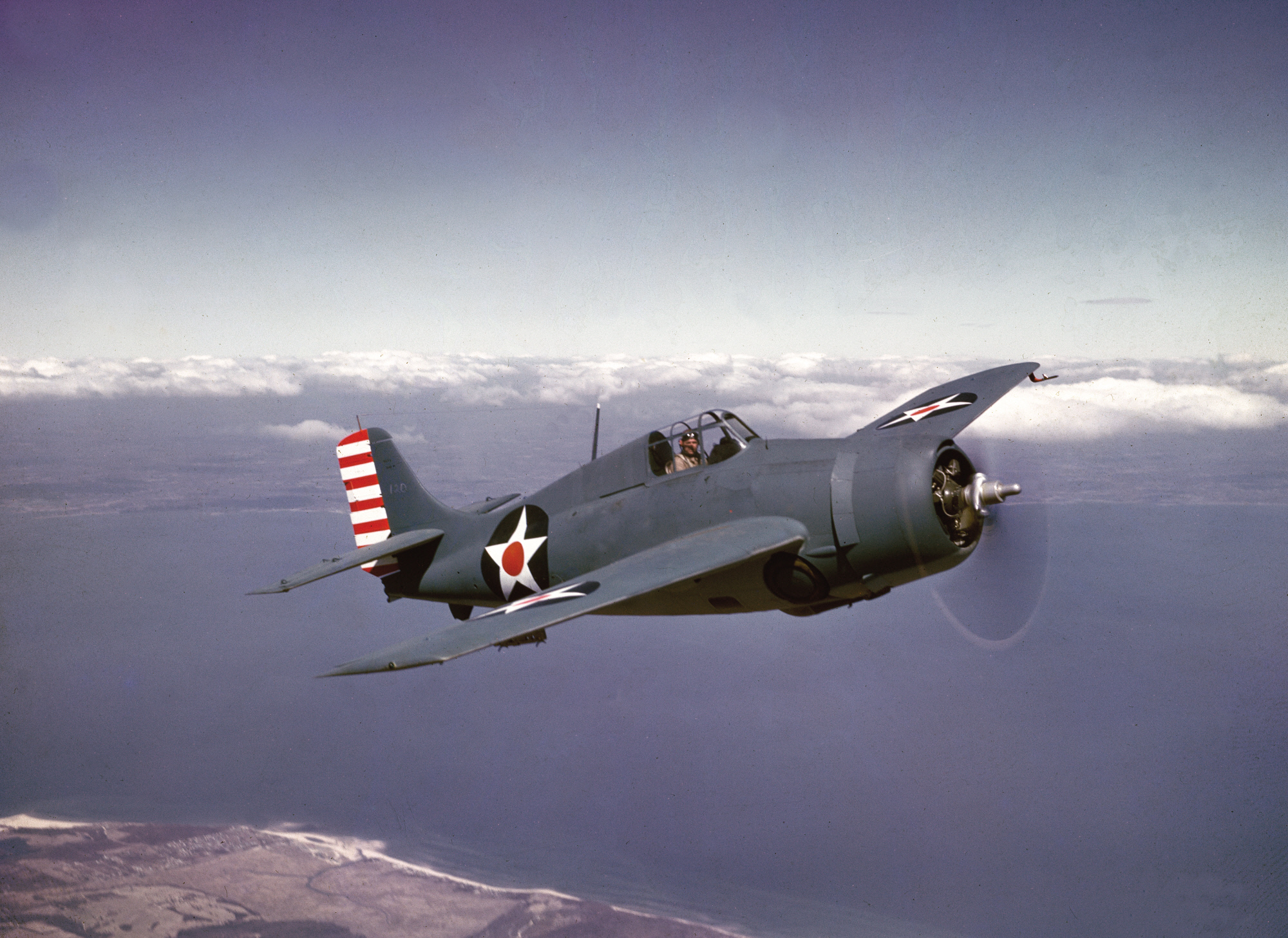
VMF 211 had lost two-thirds of its aircraft on Monday, 8 December:
“. . . 36 twin-engine bombers based on Roi and Namur Islands in the Kwajalein Atoll, 620 miles to the southward, executed the day-bombing missions. The first strike, three 12-plane vees dove out of a rain squall at noon 8 December. The surf was roaring so furiously that nobody ashore heard or saw the enemy until fifteen seconds before the first bombs hit. The planes leveled out at 2000 feet altitude and made for the airfield, where 8 Wildcats were being serviced and fueled. Here 4 grounded planes disintegrated under direct hits; fire spread and destroyed 3; the eighth was hit but later salvaged; 23 Marine officers and men were left dead or dying. . . Four Wildcats now got into the battle, strafing the retreating ships and dropping their little 100-pound bombs from an extemporized release, returning to rearm, take off and bomb again. They put the torpedo battery of Tenryu out of action, hit the radio shack of Tatsuta, and started gasoline fires on a transport. One plane was badly shot up; the pilot, Captain Elrod, just managed to ground it on the beach, burning and broken, but he had already made a lethal pass at the retreating destroyer Kisaragi, which carried an extra load of depth charges. A second Wildcat was just pushing over to press home an attack on this destroyer at 0731 when she blew up and sank. There were no survivors.”
— History of United States Naval Operations in World War II, Volume III: The Rising Sun in the Pacific 1931–April 1942, by Samuel Eliot Morison, Little, Brown and Company, Boston, 1988. Chapter XII at Pages 230 and 234.
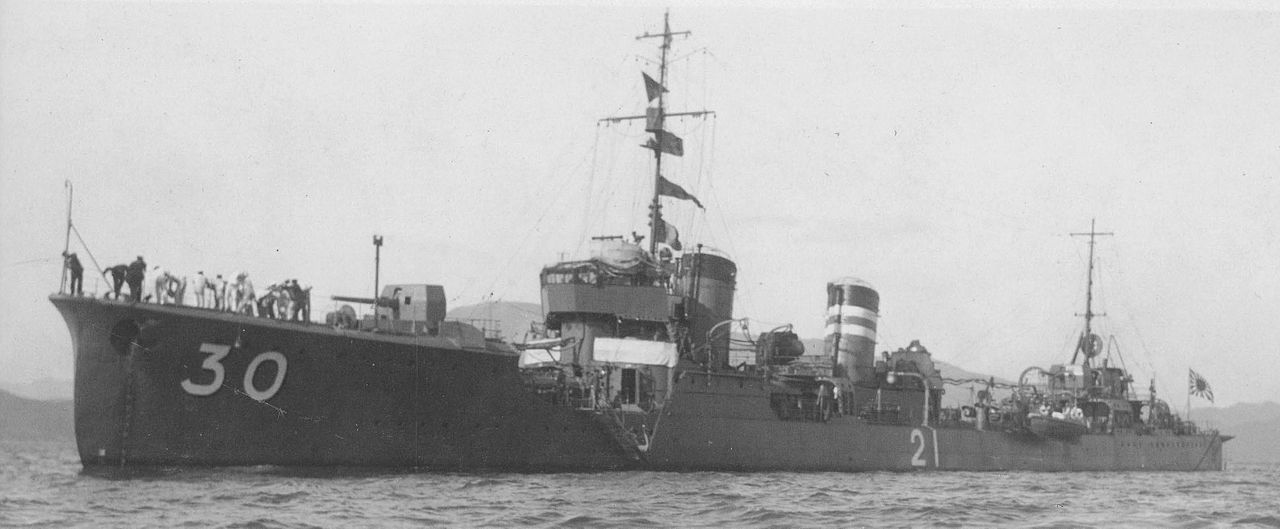
A few minutes earlier another destroyer, IJN Hayate, had received two direct hits in its magazines from the 5-inch/51-caliber guns of Battery L, a coast defense artillery battery of the U.S. Marines. It was hit at a range of 4,000 yards (3,658 meters), exploded and sank with all hands. The invasion force flag ship, light cruiser IJN Yubari, received 11 direct hits from the Marine gunners. Under the combined air and artillery attacks, the invasion force withdrew.
The island finally fell to the unrelenting Japanese attacks, 23 December 1941.
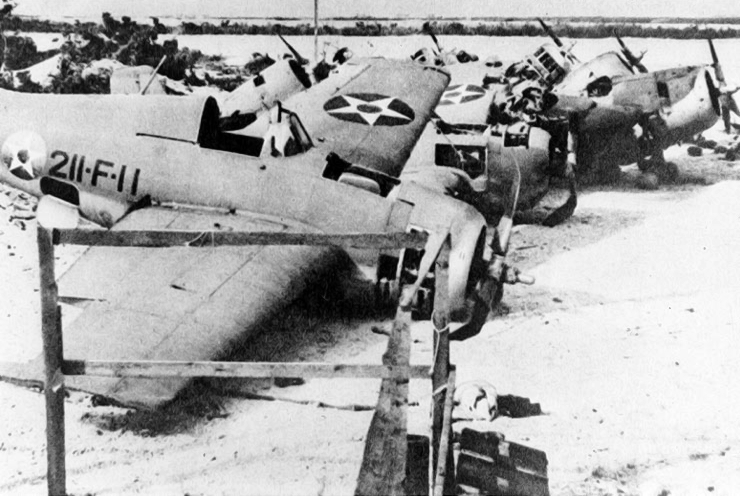
Captain Elrod’s fighter was a Grumman F4F-3 Wildcat, designed by Robert Leicester Hall as a carrier-based fighter for the United States Navy. The F4F was a single-place, single-engine, mid-wing monoplane with retractable landing gear, designed to operate from land bases or U.S. Navy aircraft carriers.
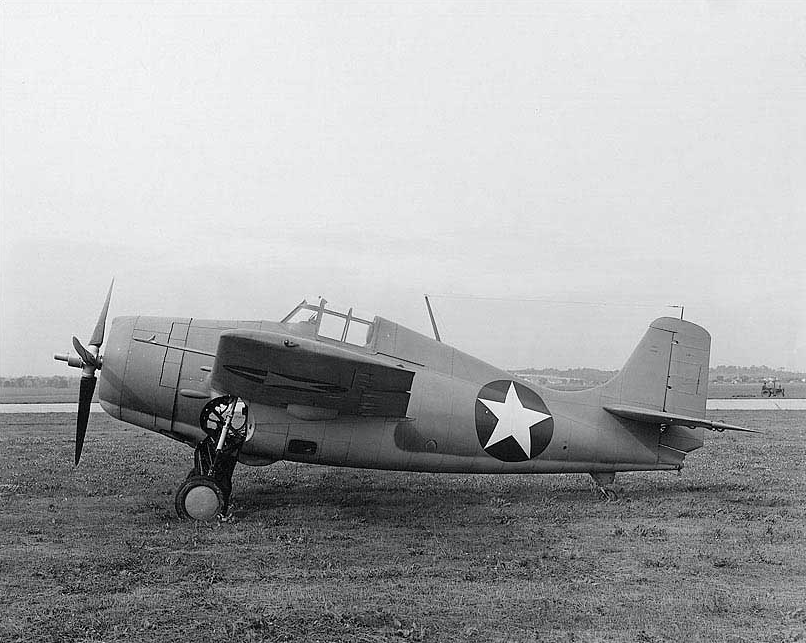
The F4F-3 was 28 feet, 10½ inches (8.801 meters) long, with a wingspan of 38 feet, 0 inches (11.582 meters) and overall height of 11 feet, 9 inches (3.581 meters). Unlike the subsequent F4F-4, which had folding wings for storage aboard aircraft carriers, the F4F-3 had fixed wings. The wings had an angle of incidence of 0°, and 5° dihedral. The horizontal stabilizer span was 13 feet, 8 inches (4.166 meters) with 1½° incidence. The empty weight of the basic F4F-3 was 5,238 pounds (2,376 kilograms), and the gross weight was 7,065 pounds (3,205 kilograms).
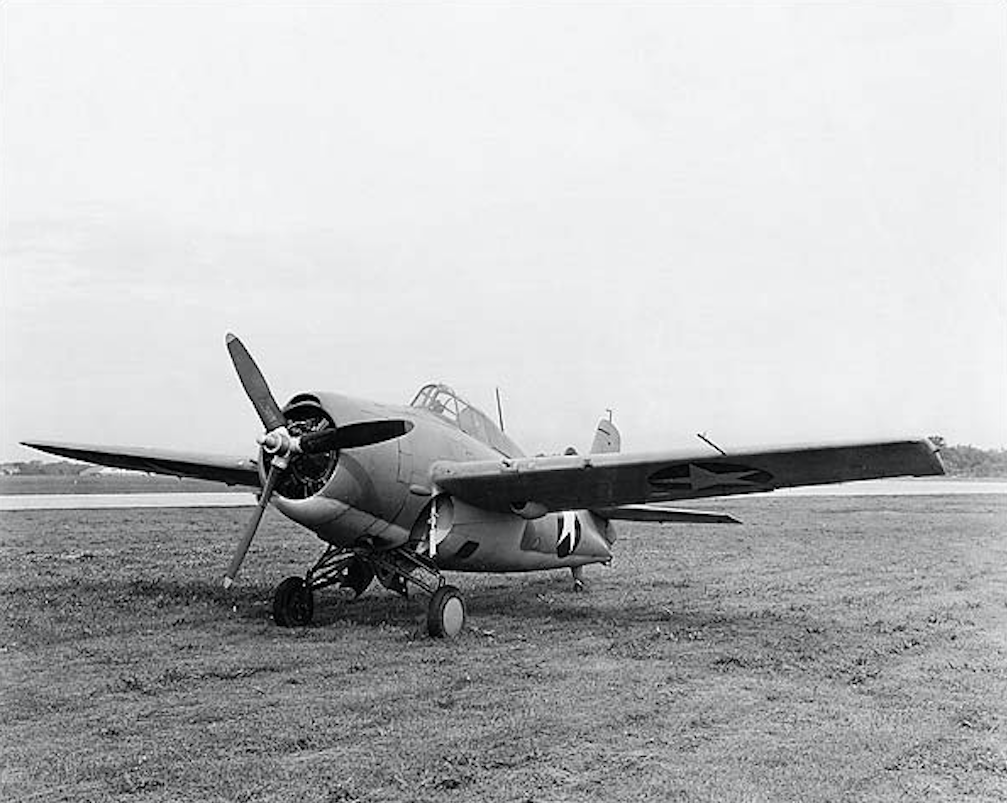
The F4F-3 was powered by an air-cooled, supercharged, 1,829.39-cubic-inch-displacement (29.978 liter) Pratt & Whitney Twin Wasp SSC5-G (R-1830-76) two-row, 14-cylinder radial engine with a compression ratio of 6.7:1. The R-1830-76 had a normal power rating of 1,100 at 2,550 r.p.m., from Sea Level to 3,500 feet (1,067 meters), and 1,000 horsepower at 2,550 r.p.m. at 19,000 feet (5,791 meters). It was rated at 1,200 horsepower at 2,700 r.p.m. for takeoff. The engine turned a three-bladed Curtiss Electric propeller with a diameter of 9 feet, 9 inches (2.972 meters) through a 3:2 gear reduction. The R-1830-76 was 4 feet, 0.6 inches (1.221 meters) in diameter, 5 feet, 11.31 inches (1.811 meters) long, and weighed 1,550 pounds (703 kilograms).
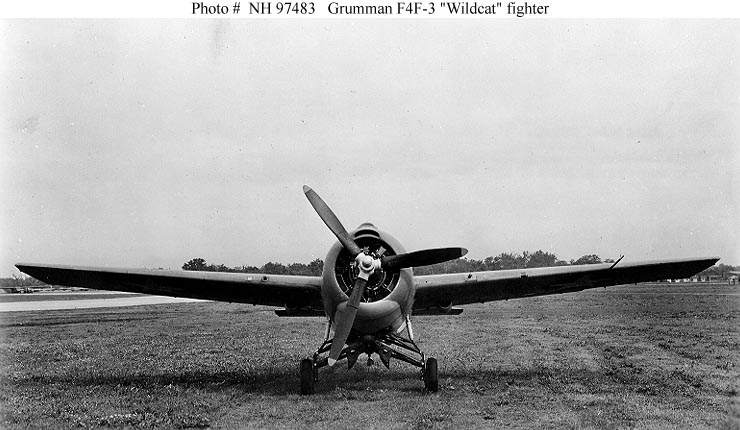
The F4F-3 had a maximum speed of 278 miles per hour (447 kilometers per hour) at Sea Level, and 331 miles per hour (533 kilometers per hour) at 21,300 feet (6,492 meters). Its service ceiling was 37,000 feet (11,228 meters). Its maximum range was 880 miles (1,416 kilometers)
The F4F-3 Wildcat was armed with four air-cooled Browning AN-M2 .50-caliber machine guns with 450 rounds of ammunition per gun.
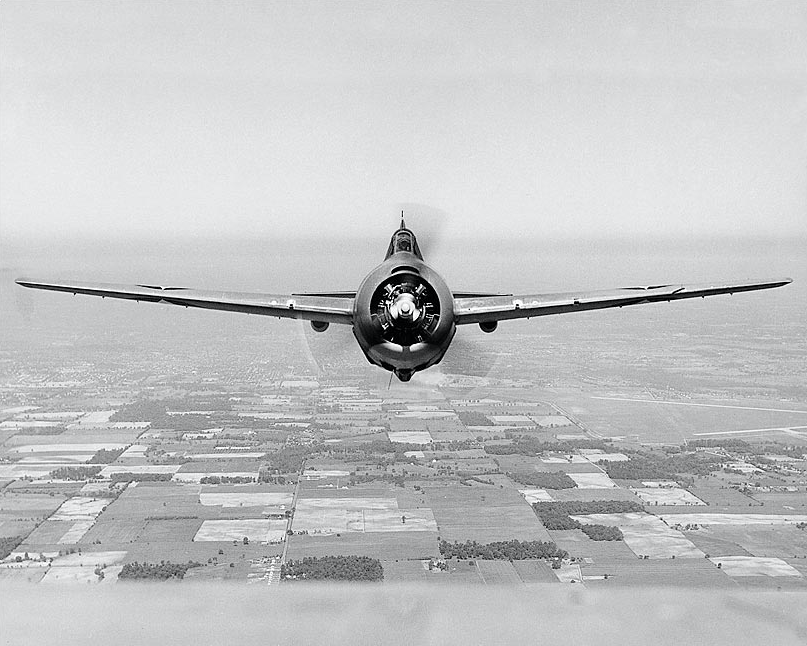
The prototype XF4F-1 made its first flight in 1935. It was substantially improved as the XF4F-2. The first production F4F-3 Wildcat was built in February 1940. The airplane remained in production through World War II, with 7,860 built by Grumman and General Motors Eastern Aircraft Division (FM-1 Wildcat).
According to the National Naval Aviation Museum, F4F Wildcats held a 9:1 ratio of victories over Japanese aircraft, with 1,006 enemy airplanes destroyed in combat.
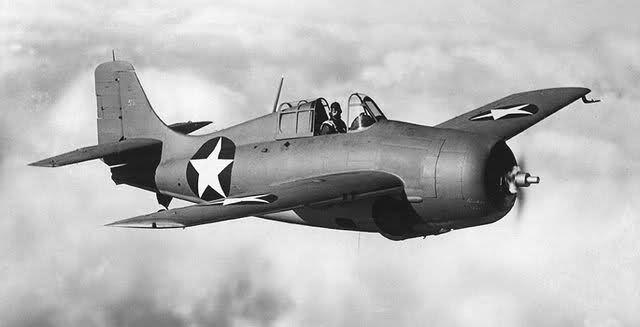
© 2017, Bryan R. Swopes
Bryan – you put this one in twice….
ace stories and pix.
Thank you, Randal.
Capt Elrod went down fighting during the amphibious assault on 23 Dec 41; every Marine is an Infantryman.